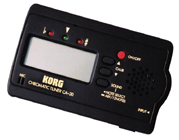1. Many students just run through the one easiest way to play a scale, and if it's in tune, that's the end of the process. This is a misconception.
A scale is not the end-product - it is a tool to be used in preparation for playing music. So it's not good enough to be able to play a scale one way - it's important to be able to play it with different fingerings just in case those fingerings will be necessary (and some day they probably will be). Let's look at a scale:

While there are many different books of studies and scales and of technique which you can use to get different fingerings, you can also experiment on your own. For example:
i) move up to the second/third/fourth position as soon as you can, and stay there as long as you can
ii) play the first D with the 4th finger, and play the next notes all with the fourth finger and see how far you can go up the scale using just your 4th finger
Of course you will find many books on different kinds of bowing as well, but in this post I want to focus on the use of the scale in terms of left hand use.
2. Using a chromatic tuner in playing scales

I recommend trying out this process in using a chromatic tuner:
a) Play a scale as in tune as you think it is, without using a tuner.
b) Play the scale slowly again, and look at the tuner after you play each note - but when you play a new note, focus on the violin, and your fingers.
c) Check which notes you thought were in tune, but were not in tune. Keep these notes in mind.
d) Play the scale again, checking each note with the tuner - where notes were out of tune, anticipate and you should have fewer notes out of tune, or less out of tune than they were before.
e) Play the scale again, checking with the tuner only the notes which were still out of tune.
f) Play the scale again, without the tuner. If there are notes out of tune, first guess whether it is sharp or flat, and by how much, and then check with the tuner. If you are out of tune but at least still know whether it is sharp or flat and by how much, this shows that at least you are more certain mentally - that is, your understanding of the scale is better.
*Do not compare your scales to a piano unless you are sure that the piano is in tune and that you tune your instrument according to the A of the piano.
3. Advanced Material: The Nature of Keys
Even then, a chromatic tuner is only helpful to a point. Unlike a piano or harp, tuning on a violin (and other instruments including winds and brass) is adjustable, and should be adjustable. Look again at the G major scale above. You can play it techinically in tune using a tuner, but try it again, with the seventh note, F#, a little sharp (but just a little bit, not too much) - you will find that it sounds good, and it fits with the character of G major as a key. In some written music in G major, a higher F# will actually sound more in tune than one that is checked with a tuner.
On the other hand, the seventh note of a different scale like Eb major would not work - in fact, some of those notes may sound more in character a little flat. A very generalized statement is that keys with sharps have a tendency to go higher and keys with flats tend to go lower. However, this is a very big generalization, and one should experiment, discuss, and ask around. It will of course differ in different circumstances - whether you play alone or with other stringed instruments, or whether you play with piano, as well as how the piece is written.
Whatever it is - there are two scale degrees (or notes in a scale), which should always be in tune as with a chromatic tuner: the 4th, the 5th and the octave. In G major that would be the C and the D and the (next) G. That is one of the reasons we call them the "perfect" 4th, 5th and 8ve.
4. Other Tips on Scales
a) I know we are focussing on the left hand, but please listen carefully to the open strings - and make sure that they blend with the fingered notes. Also, please watch how the sound changes from string to string.
b) Listen to music in a key you are practicing, and see if you spot a kind of character with the scale.
c) Play an easy tune in two different keys - does it affect you differently?
d) When facing some difficulties in shifting, stop at each shift and check whether it is in tune. The method for playing such a thing more in tune would be in three steps:
First, hear the note in your head
Second, place the finger
Third, play and listen
It sounds easy but if we stop and do each of these steps, it helps us to play much better in tune, a process that all of us strive to do, including if not especially, myself.






3 comments:
โพสท์ครั้งที่ 12 เรื่อง สเกล (Scales)
การเล่นสเกลมักจะเป็นสิ่งไม่ค่อยมีคนชอบกันนัก และบางทีการฝึกสเกลนี้อาจจะเป็นสิ่งนักเรียนเครื่องสายเข้าใจผิดกันมากที่สุด
1. นักเรียนหลายคนเพียงแค่เล่นสเกลให้จบๆ ไปโดยเลือกวิธีเล่นที่ง่ายที่สุด และถ้าเล่นได้ไม่เพี้ยนก็ถือว่าการฝึกจบกันไป ซึ่งการคิดแบบนี้เป็นสิ่งที่ผิด
การฝึกสเกลไม่ใช่ผลสำเร็จของกระบวนการ แต่มันเป็นวิธีฝึกที่ใช้เตรียมตัวสำหรับการเล่นดนตรี ความสามารถในการเล่นสเกลด้วยวิธีแบบเดียวยังไม่ดีเพียงพอ เพราะการเล่นสเกลด้วยการวางนิ้วแบบต่างๆ กันเป็นสิ่งสำคัญมากในกรณีการวางเหล่านิ้วเหล่านั้นเป็นสิ่งจำเป็นขึ้นมา ซึ่งในวันหนึ่งจเป็นสิ่งจำเป็นแน่นอน ลองมาดูสเกลนี้กันก่อน
ในขณะที่ในท้องตลาดมีตำราและแบบฝึกหัดเทคนิคสเกลต่างๆ มากมาย ซึ่งคุณสามารถเลือกใช้ฝึกนิ้วแบบต่างๆ ได้ และคุณยังสามารถทดลองตามแบบของคุณเองได้อีกด้วย เช่น
i) เปลี่ยนขึ้นไปเล่นในโพสชั่น 2, 3 และ 4 ในทันทีที่คุณสามารถเล่นได้ และเล่นให้นานที่สุดเท่าที่จะทำได้
ii) เล่นโน้ตตัว D ด้วยนิ้วก้อย และเล่นโน้ตต่อไปด้วยนิ้วก้อย และดูว่าคุณสามารถเล่นสเกลได้อีกมากน้อยแค่ไหนโดยใช้เพียงนิ้วก้อย
แน่นอนว่าคุณจะพบตำราอีกหลายเล่มที่สอนการใช้คันชักแบบต่างๆ แต่ในบทความนี้ผมอยากจะเน้นเรื่องการฝึกสเกลของมือซ้ายเท่านั้น
2. Using a chromatic tuner in playing scales
เครื่องตั้งสายแบบโครมาติก (Chromatic tuner) จะช่วยได้มากในบางเรื่องและอาจไม่มีประโยชน์ในเรื่องอื่นๆ มันจะมีประโยชน์มากในการฝึกขั้นแรกๆ โดยจะบอกได้ว่าคุณเล่นเพี้ยนสูงหรือเพี้ยนต่ำ ซึ่งคุณยังแยกไม่ออก แต่หลังจากนั้น ถ้าคุณยังมัวแต่ดูเครื่องตั้งสายอยู่ และไม่ได้เน้นสมาธิไปที่การวางนิ้วของคุณเองแล้วละก็ มันจะเป็นผลเสียมากกว่าผลดี
ผมขอแนะนำให้ลองฝึกในขั้นตอนนี้โดยใช้เครื่องตั้งสายแบบโครมาติก (Chromatic tuner) ควบคู่ไปด้วย
a) เล่นสเกลให้เสียงถูกต้องตามที่คุณคิดว่าใช่โดยไม่ใช้เครื่องตั้งสาย
b) เล่นซ้ำอีกครั้งอย่างช้าๆ โดยให้มองดูเครื่องตั้งสายหลังจากที่คุณเล่นโน้ตแต่ละตัวแล้ว แต่เมื่อคุณเล่นโน้ตตัวใหม่ ให้เน้นสมาธิไปที่ไวโอลินและนิ้วของคุณ
c) ตรวจดูว่าโน้ตตัวไหนที่คุณคิดว่าเล่นได้ตรงเสียงแต่จริงๆ แล้วมันดันไม่ตรงเสียง ให้จำโน้ตตัวนั้นเอาไว้
d) เล่นสเกลอีกครั้งหนึ่ง ตรวจสอบโน้ตแต่ละตัวด้วยเครื่องตั้งสาย ดูว่าโน้ตตัวไหนเพี้ยนให้ให้แก้ไข ซึ่งโน้ตที่เล่นเพี้ยนควรจะน้อยลงหรือเพี้ยนน้อยกว่าก่อนหน้านี้
e) เล่นสเกลอีกครั้งหนึ่ง ตรวจทานด้วยเครื่องตั้งสายเฉพาะโน้ตที่ยังคงเล่นเพี้ยน
f) เล่นสเกลอีกครั้งหนึ่งโดยไม่ใช้เครื่องตั้งสาย ถ้ายังมีโน้ตที่เพี้ยนอยู่ ก่อนอื่นให้ลองทายว่าเพี้ยนต่ำหรือเพี้ยนสูง และเพี้ยนมากหรือน้อยแค่ไหน หลังจากนั้นให้เช็คกับเครื่องตั้งสาย ถ้าคุณยังเล่นเพี้ยนอยู่ แต่อย่างน้อยคุณก็ยังรู้ว่าเล่นเสียงเพี้ยนสูงหรือเพี้ยนต่ำ และผิดไปมากน้อยแค่ไหน แสดงให้เห็นว่าอย่างน้อยคุณก็มีความมั่นใจมากขึ้น นั่นคือความเข้าใจเรื่องสเกลของคุณดีขึ้น
*อย่าเอาการเล่นสเกลของคุณไปเทียบกับเสียงเปียโน นอกจากจะแน่ใจว่าเปียโนของคุณเสียงไม่เพี้ยน และคุณตั้งสายไวโอลินตามเสียง A ของเปียโน
Post a Comment